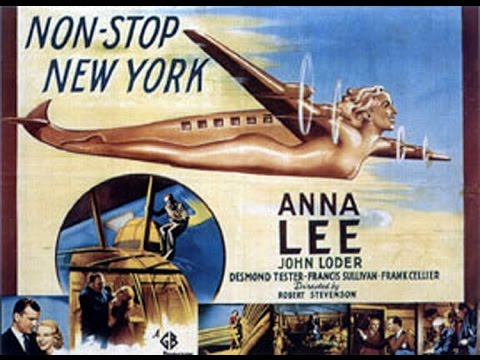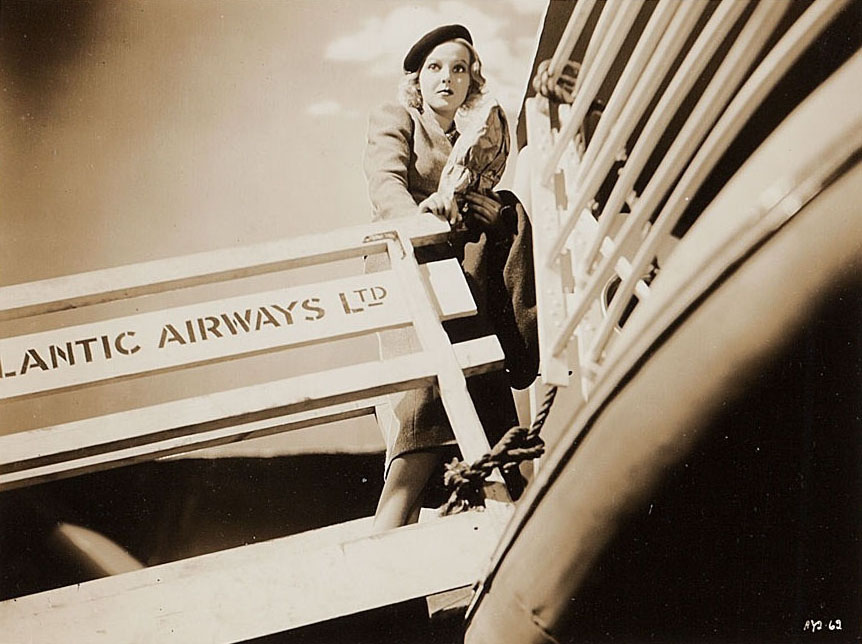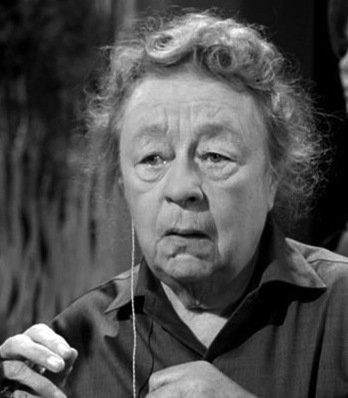Just the facts: 1 hr 7 m and IMDB 6.9/200
Janne Wass includes it in his blog ‘Scifist, a history of science fiction movies in reviews,’ and so I had a look on You_Tube. Such is the Finn’s influence.
 Janne Wass
Janne Wass
The film is a conventional krimi set in an airplane. The players are fine but the script is neither fish nor fowl, but more of a homophone of the latter. The villain is so flamboyant even the naive boy spots him long before the dense and dull copper does. The shyster blackmailer is too stupid to live. Sometimes it played for laughs, hearts and flowers at other times, and deadly drama, and back and forth.

Another case of the lobby card bearing no relationship to anything in the movie.
As to its credentials as Sy Fy, it was made in the USA in 1937 but is set in the distant year of 1938. No, that will not make the cut. After much dithering in the first half, the second half all takes place on a giant airplane that flies from London to New York, non-stop! In eighteen hours! Non-stop! Gasp!
That seems to be it.
The size of the craft is enormous and the non-stop flight over the Atlantic, these get it on the SciFist list. In 1937 that would have been phenomenal because Trans-Atlantic flight was still for daredevils. Most flights were by flying boat aircraft taking off from the waters of western Ireland and landing in Newfoundland. The alternative route, again by flying boat, was to go south through Lisbon, the Azores, Bermuda, and so on. Straight across from London to New York City only came with jet engines in 1958 when the British Overseas Airways Corporation, as British Airways was then called, flew did it. The route was over the northern most North Atlantic to Gander in Newfoundland where the aircraft stopped for fuel, catering, and relief. I once laid up there for a few hours because of weather. I cannot find a time given for these trips in 1958 but they were not non-stop even twenty years after this film.
Today the British Airways web site gives 8 1/2 hours from London to New York City. It is 7 1/2 back to London thanks to the winds. Both of these flights are direct. Singapore to New York City is more than 18 1/2 hours these days. Imagine sitting next so some fool bellowing into a mobile phone for that flight.
Let’s call the aircraft Titan, a flying boat, too; inside it is even bigger than the Tardis. The staterooms put those of ocean liners portrayed on film at the time to shame. The windows are far bigger than those that brought the Constellations down. And, get this, there are open air balconies frequented by the passengers as it wings over the North Atlantic. The baggage hold is cavernous and largely devoid of bags. There is more than one dining room. There are multiple decks and if that is not enough room our hero has to climb outside over the top of the speeding aircraft to enter the cockpit, because its doors only open from the inside. While we can appreciate this limitation as a security measure, it begs the question of how the pilots get in.
Considering that context, ‘Non-Stop New York’ is certainly futuristic in its background, but….. [quibble alert] still not Sy Fy. That futurism contributes nothing to the plot which is an unsolved crime, a missing witness, young police officer meets young woman, etc. It just so happens that the resolution is on the Titan. It could as well have been on a ship, in mountain hotel, on a lake. The futuristic element is incidental background. Harrumph. No outer space, no science of any kind, no aliens, no superwomen, none of the usual Sy Fy suspects.
The heroine, Anna Lee, is feisty, independent minded, and smart. She knows what to do and does it.
 The stowaway strides up the gangway to board the airship.
The stowaway strides up the gangway to board the airship.
There were a few such celluloid female role models in the 1930s but they evaporated from the screen by the homogenous 1950s. Lee had top billing on the poster and cards of the time and carries the picture.
The story is confused and confusing and tries to slip a ninety-minute feature into an hour. It starts in New York City, then the heroine travels by boat home to England, then back to New York City as a stowaway in the aforementioned Titan. It ends somewhere over Newfoundland. All this to’ing and fro’ing reveals all too clearly the mini-budget. The New York City sets look just like the London ones and vice versa. The whole dynamic rests on the idea that in those pre-NRA days a gangland slaying in New York City is world news, and there are many spinning newspaper headlines from around the world. Some in foreign languages. Wow!
There are some good laughs and some good lines but they do not zing in the spongy morass.
By the way it is derived from a novel by Australian Ken Attiwill and one of the players later emigrated to Australia, namely Desmond Tester, who is the youthful comic relief in this tale. Tester made a career in children’s television in Australia during the 1950s and 1960s and those of certain age remember that name. He also did some Strine television drama in the 1970s. In contrast Attiwill was born in Adelaide and migrated to England. Three of his novels were filmed. As with me, there is no entry for him in either the ‘Australian Dictionary of Biography’ or ‘Wikipedia,’ but traces in the former suggest he was a journalist who married an English woman in Adelaide and went to England with her.
The saxophone playing boy Demond Tester is in the charge of his Aunt Veronica and she seemed so familiar to me, but from where? And then it came to me, as things less and less often do, from the mind palace: she was a biologist in ‘The Man-Eater of Surrey Green’ (1965) from ‘The Avengers,’ one Athene Seyler.
 Athene Seyler in the 1950s.
Athene Seyler in the 1950s.
She had earlier been in ‘Build a Better Mousetrap’ (1964) where she showed the local biker gang a thing-or-two. Curmudgeonly and quirky with a lived-in face even in 1937, she was in much demand in films of the 1940s and 1950s.
Skip to content
